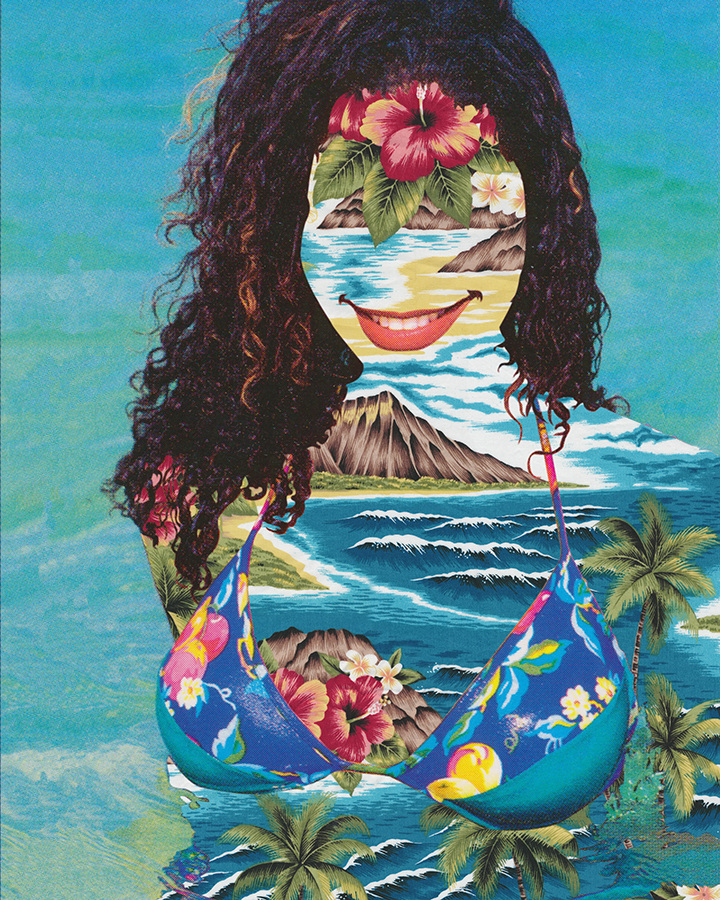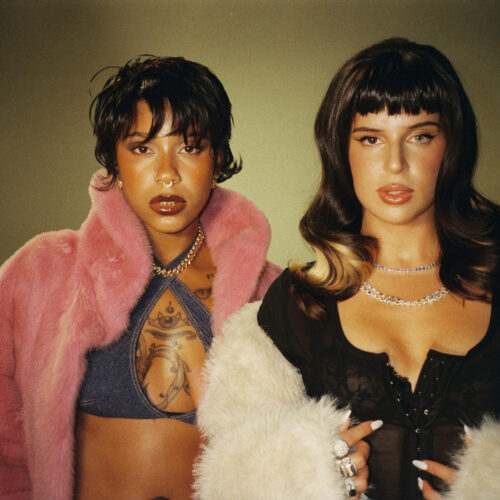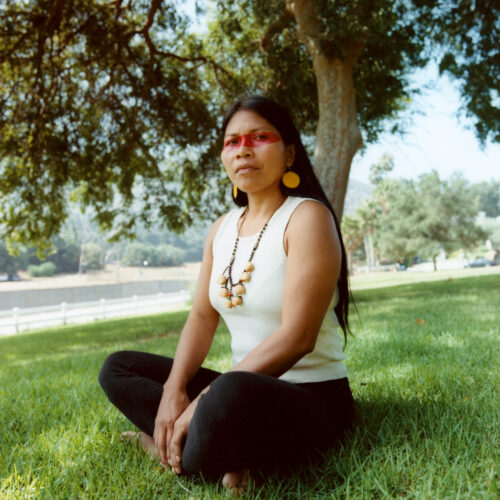Latina is highlighting the work of Latinx creatives and visual artists through NYC art guides and thematic stories in our new column, Curated by KCV. Each month, Art Curator and Processa founder, Kiara Cristina Ventura, will speak on exhibitions and inspirational artists that everyone should keep on their radar from an informed lens.
Historically, the art world has been a hotbed for gender disparities: women artists are often overlooked, and few receive the support they need to advance their careers. Meanwhile, male artists – especially cis-white-male artists – have co-opted women and the female figure for decades and been applauded for it. Often, their photographs, sculptures, and paintings of women unnecessarily idealize, sexualize, and objectify their so-called muses. Three prominent examples that present women in a subservient manner include Francisco Goya’s La maja desnuda (c. 1797–1800), Édouard Manet’s Olympia (1863), and Pablo Picasso’s Les Demoiselles d’Avignon (1907).
The artists’ gaze powerfully influences an audience’s experience of their work. When men are the predominant mouthpiece for femininity in art, society’s view of women could become distorted. Alternatively, when women portray other women, they reflect a more multidimensional narrative of themselves to the world.
Today, countless women are pioneering a movement to take agency over their artistic stories. They are capturing the complexities behind the female figure and revolutionizing concepts of modern femininity. These five young, powerful, Latina artists are paving the way for this initiative.
Joiri Minaya
Joiri Minaya is a Dominican artist, born in New York and raised in Santo Domingo. Minaya challenges the exoticized and fetishized portrayals of Caribbean women that followed 15th-century colonization. Her work represents Caribbean women as more than tropical accessories to be admired on vacation. Minaya also questions the white-male gaze and the commercialization that has objectified Caribbean women since the 20th century. Her performances, installations, collages, and sculptures speak to the relationship between women and nature. In her work, Minaya uses images of the abstracted female form in conversation with tropical flora and environments to reunite women with nature. She works to distance Caribbean women from the ideals western tourism has imposed on their culture. By abstracting the female form as well as the flora, Minaya releases the images of women from the male gaze. After all, the deconstructed female form becomes nearly unidentifiable, therefore free from the patriarchal and colonial systems that society has forced onto it.
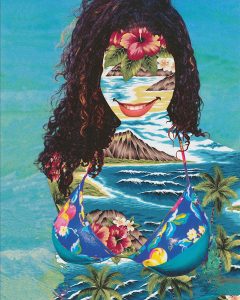
Joiri Minaya, Woman-landscape (On opacity) #4 & #5, 2020, archival ink print, 8 x 10 in.
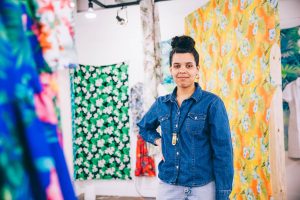
Joiri Minaya in the studio. Photo by Joel Gaal, courtesy of Red Bull House of Art.
Laura Ciriaco
Laura Ciriaco is a Dominican artist and New York native who takes agency over “the feminine” in her image-making process. Working with photography and mixed media, Ciriaco portrays women in different states of physical, mental, emotional, and spiritual healing during moments of divinity and grace. Her series Red (2017-ongoing) explores the various realms of femininity using tones of red as a metaphoric and visual tool of empowerment. Here we see photographed portraits of women and femme non-binary people dressed in red – symbolizing intense energetic revelations and internal reflections. In her book, Respira (2020), she shares “a photographic meditation” honing in on her healing journey and that of others. In her meditation, she includes what she calls “reconstructed letters,” which range from poems, love letters, family archives, personal reflections, and photographs from her career. “Threaded together with the color red, a vital source of my innate power, the spreads were curated to depict my uprooted transitional trip from the Dominican Republic to New York City, to the exploration of femininity through portraiture and personal documentation,” she shares.
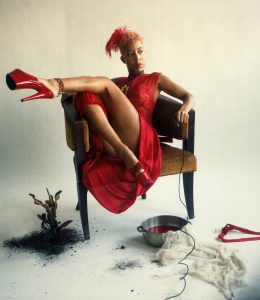
Laura Ciriaco, Self Portrait, 2022. Photographer assistant: Luis Santana. Art direction and styling by Laura Ciriaco.
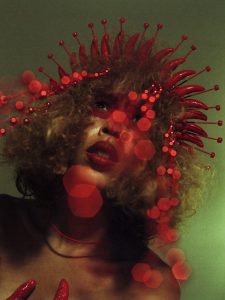
Laura Ciriaco, CROWN, 2020. Shot by: Luis Santana. Art direction, makeup and crown by Laura Ciriaco.
Cielo Félix Hernández
Cielo Félix Hernández is a Brooklyn-based painter and interdisciplinary artist from Rio Piedras, Puerto Rico. As a trans-femme Boricua, Hernández draws on memory and Caribbean culture for her art. She uses her experiences growing up between Puerto Rico and the mainland United States to combat the narrative of Latina women as only caretakers. At the forefront of her work lies the question, “what does it look and feel like to pour care and love into oneself first?” All the women she portrays in her paintings are full of agency and pay homage to their families and cultures. Her recent work includes bubblegum pink paintings of women in imagined settings participating in acts of care and labor for themselves. The figures naturally engage in everyday activities such as cleaning their home, mopping, cooking, running errands, bathing, doing their hair, and smoking weed while nude. These femme figures are obviously in control of their bodies, sense of self, and environment. We see these figures pouring into themselves with graceful everyday acts of love. Hernández also frames her elaborate paintings with fringed borders that she dyes using “agua de jamaica,” hibiscus tea.
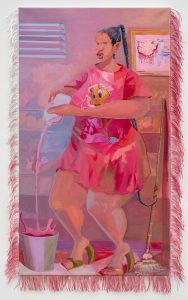
Cielo Félix Hernández, Agua d Jamaica, Bendiciones del Piso q Camino, oil on canvas, agua de jamaica dyed satin, 74 x 40”, 2021.
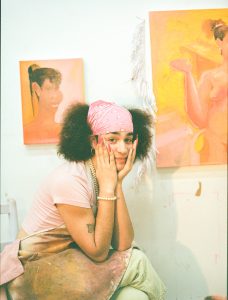
Photo by Mashael Alsaie.
Heloisa Hariadne
Heloisa Hariadne is a native of São Paulo, Brazil. By floating feminine figures in abstract, colorful, and natural spaces, she processes the complexities behind identities through painting. Hariadne derives peace from placing female figures in environments where they feel a sense of belonging and safety – both in their external settings and within their bodies. Hariadne loves portraying nature as home and connecting themes related to the body, memory, ancestry, and the organic world. Apart from featuring women, her work centers around animals such as tigers and hummingbirds while they are experiencing peace. By capturing moments of vibrant harmony between women, animals, and nature, Hariadne invites her audience to reimagine the meaning of freedom. Her paintings reflect the liberation that accompanies alignment, joy, and abundance.
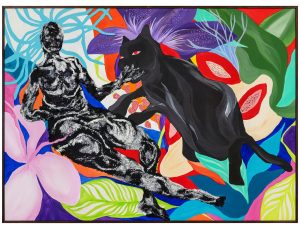
Heloisa Hariadne. A magia acontecendo enquanto não foi colocada uma forma de como vão entender o que você sente, 2021, acrylic and oil on canvas, 100.3 x 136 x 4 cm, São Paulo.
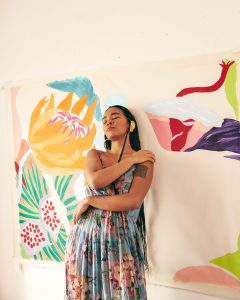
Photograph by Mylena Saza.
Angélica Maria Millán Lozano
Angélica Maria Millán Lozano is an artist from Bogotá, Colombia currently based in Brooklyn, New York. Using distressed fabrics, she creates abstract and figurative compositions that question the social injustices affecting migrant families. She focuses specifically on Latinas at home. In response to her home country’s political unrest, Millán Lozano uses her experiences to explore themes of familiarity, absurdity, foreignness, and fear. Millán Lozano chooses the fabrics for her work very carefully – opting for textiles that tell stories of resilience. The pre-worn fabrics reveal evidence of distress, wear and tear, deconstruction, and reconstruction. The artist emphasizes that these mediums can carry narratives of pain – which is fitting given that they often represent the bodies of suffering Latin American Women. Millán Lozano also selected fabric as her medium to return agency and meaning to a material often reduced to “women’s work” in Latinx households.
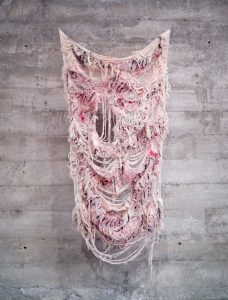
Angélica Maria Millán Lozano, Gritos, 2021, Image transfers on de-threaded canvas dipped in beet dye, 31 x 45 inches.
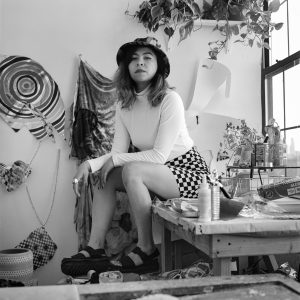
Portrait by Grace Ann Leadbeater.
